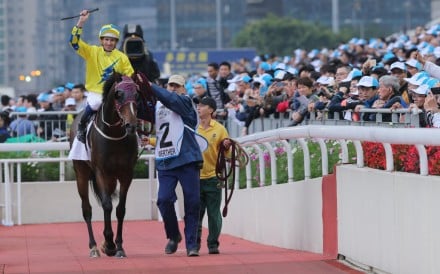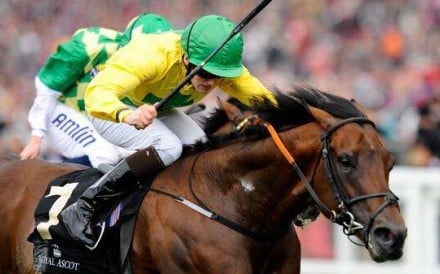Last month, legendary American track announcer Tom Durkin evoked memories of Mel Gibson as William Wallace in Braveheart as he hung up the binoculars one final time.
Durkin, of Arrrrr and Doremifasollatido fame, bellowed to the crowd, “Long live horse racing, and long live Saratoga!”
Sorry Tom, but I’m going to borrow your phrase here.
Long live Hong Kong horse racing, and long live the off-season!
It doesn’t have quite the same effect, but it’s worth shouting.
There are many benefits to Hong Kong racing – soaring turnover, fanatic interest here and abroad, only 83 meetings a year, just 1,200 horses to get to know – but the government-mandated break from mid-July to mid-September has to rank right up there.
For those directly involved – from the jockeys and trainers to stewards and administrators, and even the media – it is a chance to get away from the pressure cooker.
While it may not seem likely with only two meetings a week, it is an intense environment. Participants are scrutinised unlike anywhere else, with one slight misstep pounced on and criticised – especially with the volume of money wagered.
And for us in the media – well, I guess we are the ones applying the pressure. Even if it is over something as minor as trackwork being extended a whopping half hour, a common commentary topic for our Chinese counterparts.

We need our energy to create earth-shattering columns about how the Jockey Club provides more food to the media than the Dubai Racing Club, as one local journalist, unhappy with just coffee and cookies at Meydan, sourly wrote earlier this year.
Hong Kong is in a privileged position, with only 24 trainers, a similar number of jockeys and just one body overseeing racing. It is a model that can’t be replicated elsewhere.
There have been pushes to implement something similar in Australia, but it would never work – there are too many small clubs, trainers and jockeys who rely on the winter months to earn a quid.
Many Australian participants choose to take their break in the winter months anyway, so it is a break of sorts, but it is not across the board – racing still follows the same cycle as it does for the rest of the year.
At least the UK has something of an off-season with the rotation between the flat and the jumps.
Still, we recognise how lucky we are. For most of us the off-season means escaping Hong Kong, spending time with family and friends and enjoying life without the constant racing cycle.

It wasn’t straightforward for everyone though, with the top jockeys in particular in the wars.
Zac Purton rode six winners from 20 rides in a Japanese stint cut short by a heel injury, while Joao Moreira was struck down with appendicitis on a flight to Doha and required emergency surgery.
But both have proved after two meetings that they are in fine form. The break allowed them to refresh and return as hungry as ever as they fight for the jockeys’ championship in what could be the story of the year.
So the season is back in full swing and we’re ready for what promises to be a big season. And there’s plenty to look forward to as horses begin to plot their paths towards the Longines Hong Kong International Races.
Now, there are only 81 meetings until the next off-season…




















